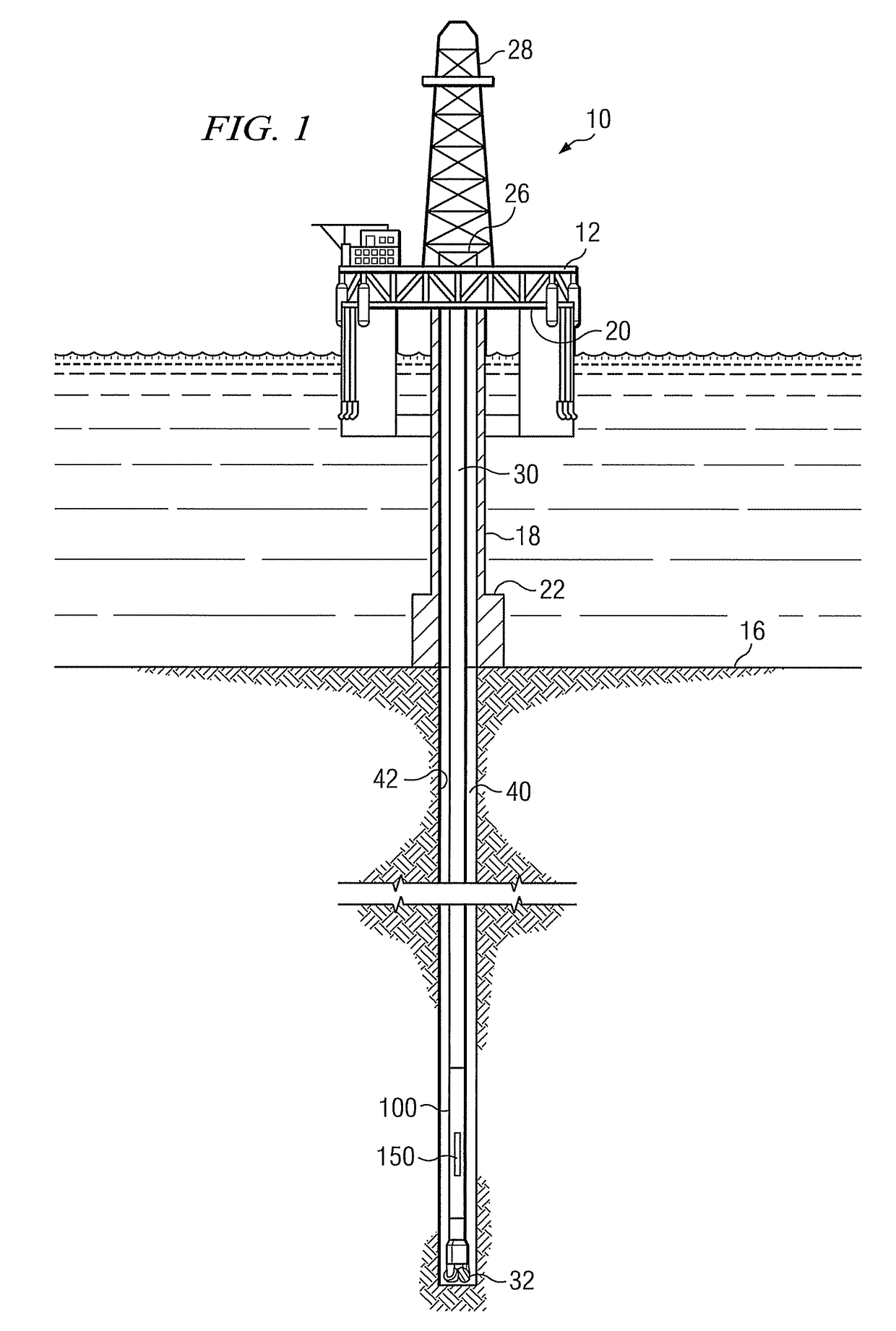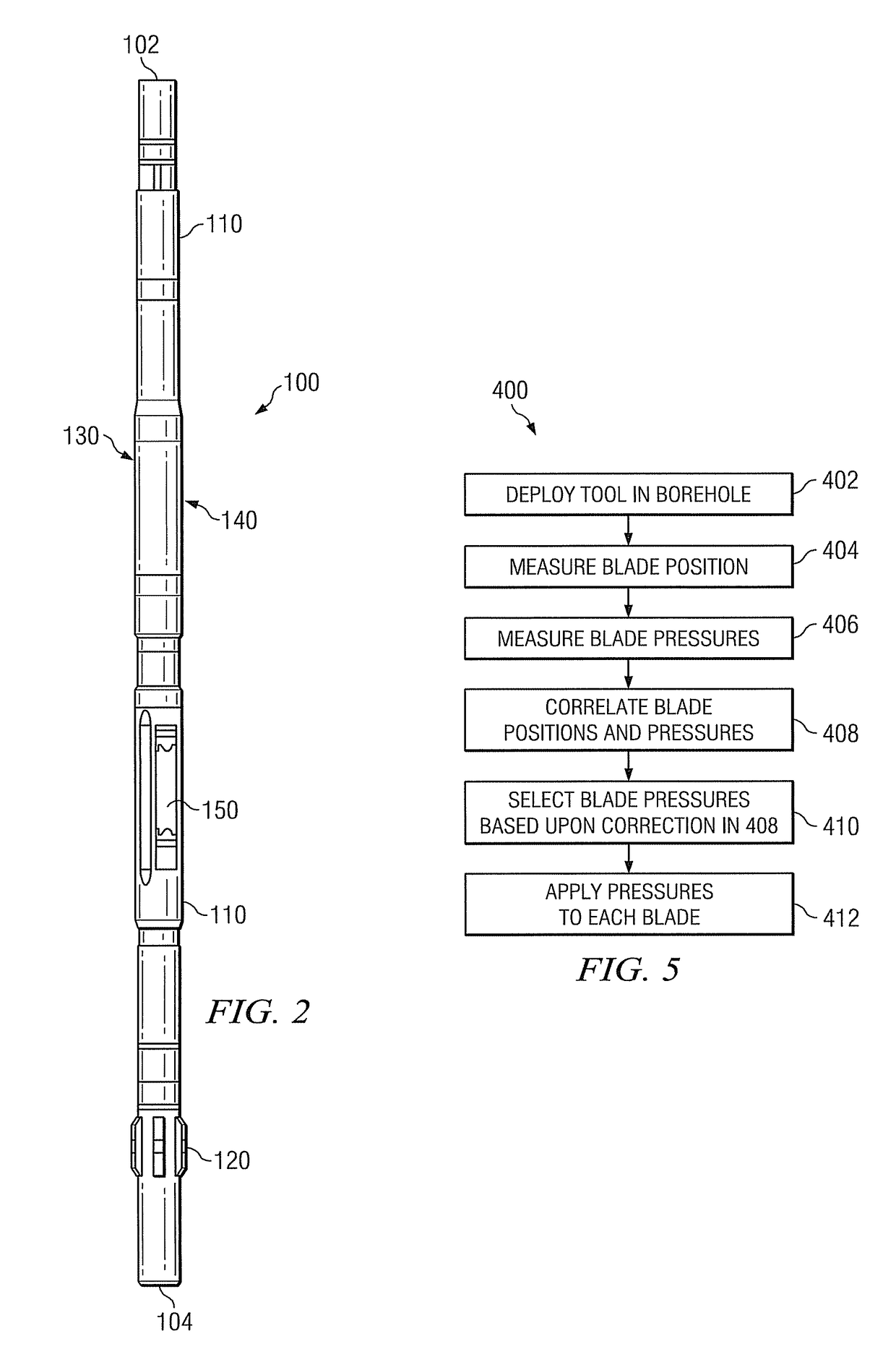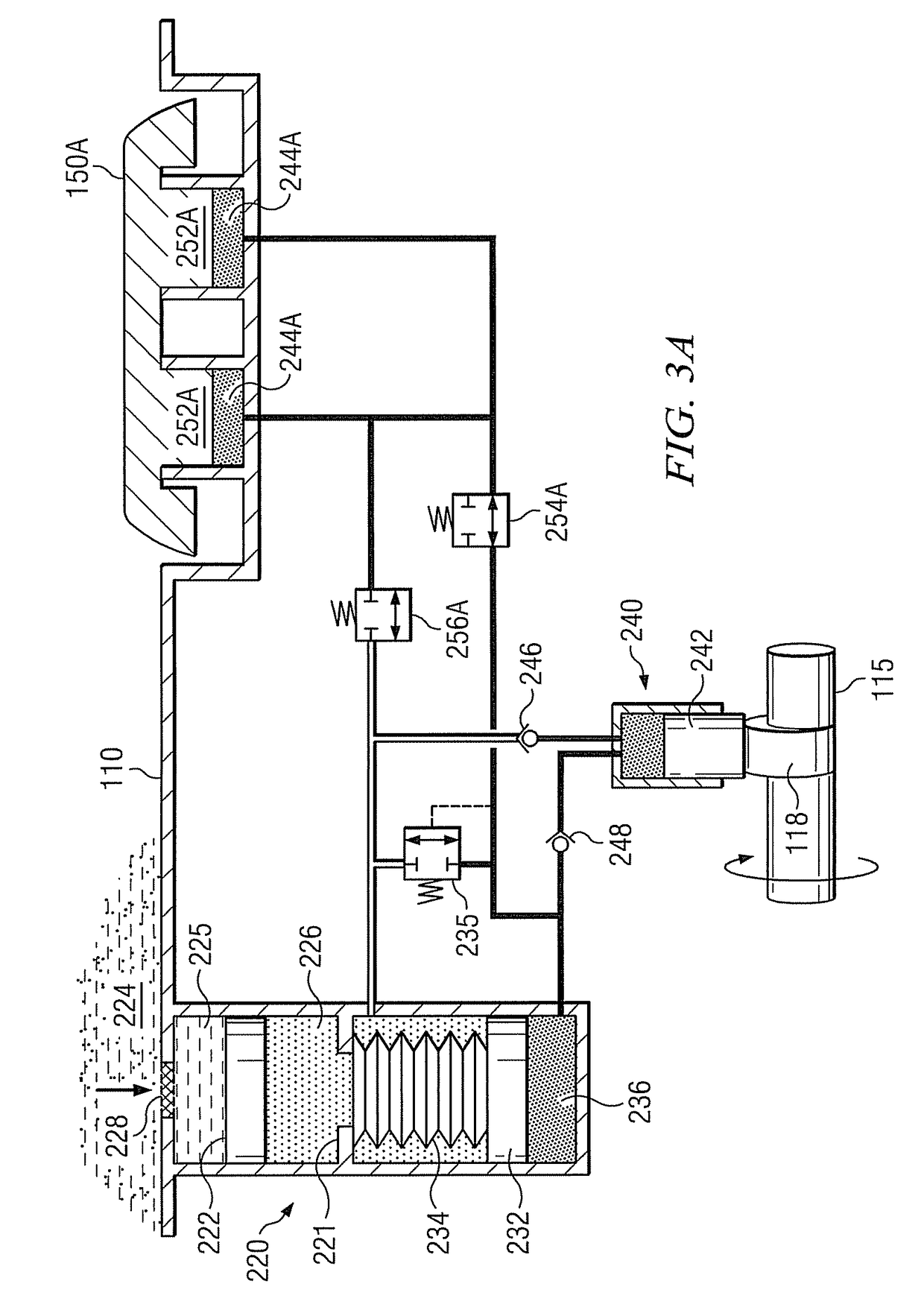Closed-loop control of rotary steerable blades
a technology of rotary steerable blades and closed loops, which is applied in the direction of survey, directional drilling, and borehole/well accessories, etc., can solve the problems of excessive drag, inability to control the total force exerted against the borehole, and difficulty in obtaining consistent and predictable borehole curvature, etc., to prevent excessive borehole friction, reduce housing roll, and promote accurate borehole caliper measurements
- Summary
- Abstract
- Description
- Claims
- Application Information
AI Technical Summary
Benefits of technology
Problems solved by technology
Method used
Image
Examples
embodiment 300
[0040]With reference now to FIG. 4, one exemplary directional drilling method embodiment 300 in accordance with the present invention is depicted in flowchart form. At 302 a downhole tool (such as tool 100) is deployed in a subterranean borehole and drilling commences (e.g., via rotating the drill string). At 304, each of the blades is independently extended (or retracted) to a corresponding predetermined radial position (e.g., calculated based on predetermined target tool face and offset values and a measured borehole caliper). At least one blade, and preferably each of the blades, is further locked at its corresponding radial position, e.g., via closing corresponding valves 254 and 256. At 306 the hydraulic pressure is measured in each of the locked blades, e.g., using corresponding pressure sensors 272. At 308, each of the blade pressures measured in 306 is compared with a predetermined target pressure range. The predetermined target pressure range includes both an upper pressure...
embodiment 400
[0061]With reference now to FIG. 5, another exemplary directional drilling method embodiment 400 in accordance with the present invention is depicted in flowchart form. Method 400 is intended to overcome the above described failure of a blade sensor and therefore may potentially (and advantageously) save considerable rig time in the event of such failures. Method 400 is similar to method 300 (depicted in FIG. 4) in that it includes deploying the steering tool in the borehole at 402. The radial position of each of the blades is measured in 404 (e.g., using position sensors 274) and the corresponding pressure in each of the blades is measured in 406 (e.g., using pressure sensors 272). At 408, the blade positions and the measured pressures are then correlated. Such position and pressure measurement and their correlation continues during drilling. For example, the controller may generate a lookup table that includes measured blade pressures as a function of predetermined or measured bla...
embodiment 500
[0064]With reference now to FIG. 6, another exemplary directional drilling method embodiment 500 in accordance with the present invention is depicted in flowchart form. Method 500 depicts one exemplary embodiment by which the blade pressures may be controlled in block 412 of method 400. Predetermined blade pressures are applied at 502. The blade pressures are then measured at 504. If the measured blade pressure is greater than an upper threshold at 506 (e.g., 10 psi above the predetermined pressure), then valve 256 is opened at 508 so as to decrease the pressure in the blade. Valve 256 may then be closed when the pressure drops below the predetermined value. If the measured blade pressure is less than a lower threshold at 510 (e.g., 10 psi below the predetermined pressure), then valve 254 is opened at 512 so as to increase the pressure in the blade. Valve 254 may then be closed when the pressure rises above the predetermined value.
[0065]In certain embodiments it may be advantageous ...
PUM
 Login to View More
Login to View More Abstract
Description
Claims
Application Information
 Login to View More
Login to View More - R&D
- Intellectual Property
- Life Sciences
- Materials
- Tech Scout
- Unparalleled Data Quality
- Higher Quality Content
- 60% Fewer Hallucinations
Browse by: Latest US Patents, China's latest patents, Technical Efficacy Thesaurus, Application Domain, Technology Topic, Popular Technical Reports.
© 2025 PatSnap. All rights reserved.Legal|Privacy policy|Modern Slavery Act Transparency Statement|Sitemap|About US| Contact US: help@patsnap.com



